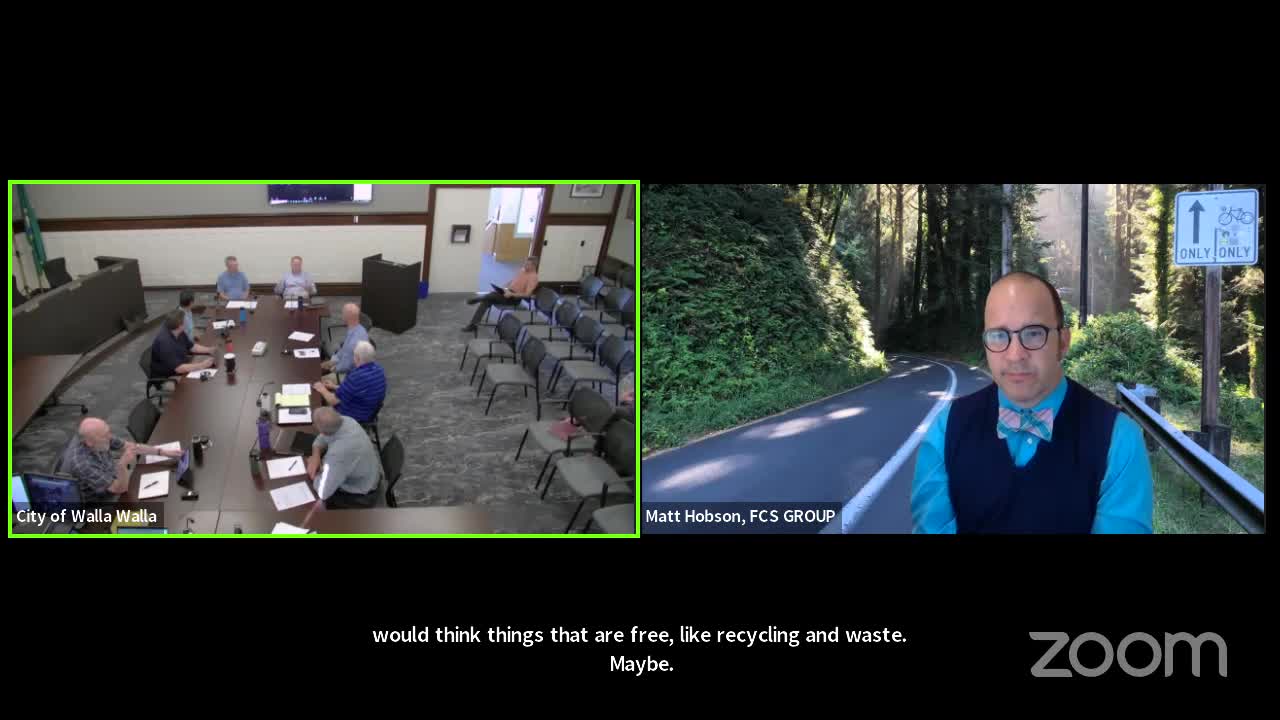Landfill rate hikes spark debate over environmental costs
August 12, 2024 | Walla Walla, Walla Walla County, Washington

This article was created by AI summarizing key points discussed. AI makes mistakes, so for full details and context, please refer to the video of the full meeting. Please report any errors so we can fix them. Report an error »

During a recent government meeting, officials discussed significant changes to landfill utility rates, highlighting the financial challenges associated with waste management and environmental compliance. The conversation centered around the necessity of a proposed 6.5% increase in landfill utility rates, which is projected to support capital investments and operational costs over the next five years.
One key point raised was the current inefficiency in waste disposal, where residents are required to make multiple trips to the landfill due to the separation of different types of waste. This issue has been a compromise in the landfill master planning process, where the option of constructing a new hazardous waste facility was deemed too costly. Instead, officials are considering retrofitting the existing facility, which, while more economical, still presents challenges for users.
The discussion also touched on the broader implications of rate increases, with officials noting that the current tipping fees are aligned with operating costs, including wages and supplies. However, to maintain and improve infrastructure, further increases may be necessary. Projections indicate that if the proposed rate increase is adopted, the landfill utility could generate approximately $1 million annually by 2030 to support ongoing capital projects.
Officials emphasized the importance of timely decision-making regarding capital projects, as delaying these could lead to increased construction costs due to inflation. The meeting underscored the delicate balance between managing environmental concerns and ensuring the financial sustainability of waste management services.
One key point raised was the current inefficiency in waste disposal, where residents are required to make multiple trips to the landfill due to the separation of different types of waste. This issue has been a compromise in the landfill master planning process, where the option of constructing a new hazardous waste facility was deemed too costly. Instead, officials are considering retrofitting the existing facility, which, while more economical, still presents challenges for users.
The discussion also touched on the broader implications of rate increases, with officials noting that the current tipping fees are aligned with operating costs, including wages and supplies. However, to maintain and improve infrastructure, further increases may be necessary. Projections indicate that if the proposed rate increase is adopted, the landfill utility could generate approximately $1 million annually by 2030 to support ongoing capital projects.
Officials emphasized the importance of timely decision-making regarding capital projects, as delaying these could lead to increased construction costs due to inflation. The meeting underscored the delicate balance between managing environmental concerns and ensuring the financial sustainability of waste management services.
View full meeting
This article is based on a recent meeting—watch the full video and explore the complete transcript for deeper insights into the discussion.
View full meeting
